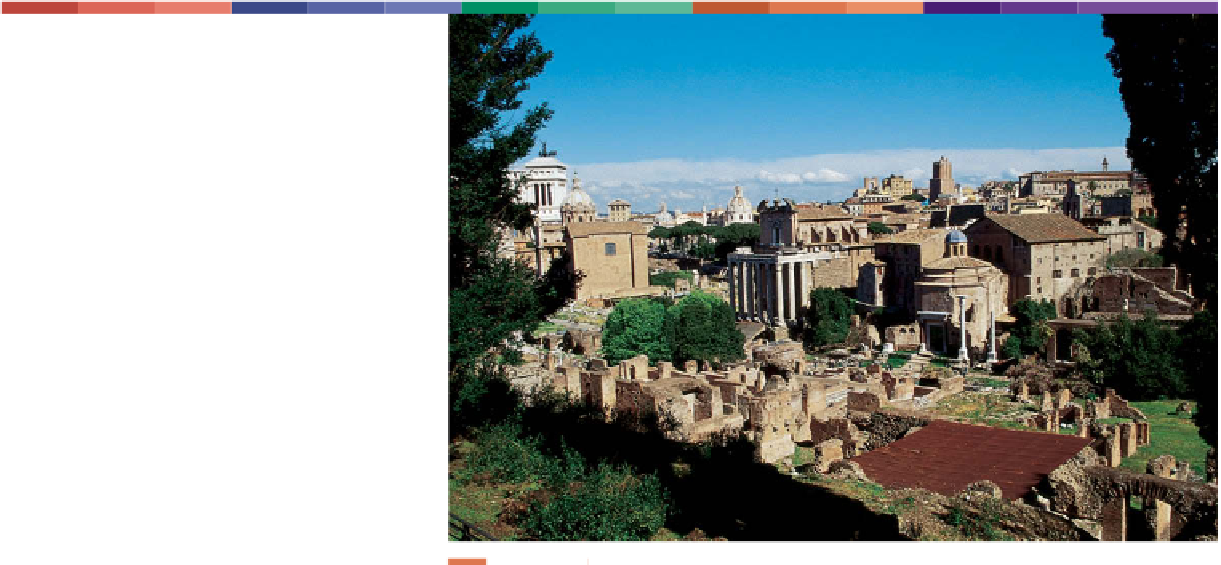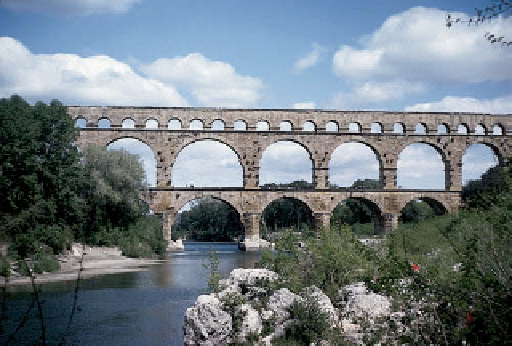Geography Reference
In-Depth Information
Field Note
“There can be few spaces of greater signifi cance
to the development of Western civilization than
the Roman Forum. This was the nerve center of a
vast empire that transformed the face of western
Europe, Southwest Asia, and North Africa. It was
also the place where the decisions were made
that carried forward Greek ideas about gover-
nance, art, urban design, and technology. The
very organization of space found in the Roman
Forum is still with us: rectilinear street patterns;
distinct buildings for legislative, executive, and
judicial functions; and public spaces adorned
with statues and fountains.”
Figure 9.13
Rome, Italy.
© Alexander B. Murphy.
its physical form and structure. Greeks planned their
colonial cities in a rectangular grid pattern, and Romans
adopted this plan wherever surface conditions made it
possible.
When we add the purpose or use of buildings to the
map of the morphology of a city, we reveal the
functional
zonation
of the city. The functional zonation reveals
how different areas or segments of a city serve different
purposes or functions within the city. For example, the
Romans took the Greek acropolis (zone of religion and
center of power) and agora (zone of public space and
the marketplace) and combined them into one zone: the
Forum
, which served as the focal point of Roman public
life (Fig. 9.13).
In Rome, the Forum includes the world's fi rst great
stadium, the Colosseum, which was a much grander ver-
sion of the Greek theater. Before crowds of thousands of
onlookers, Roman gladiators fought each other or killed
wild animals imported from Africa in the Colosseum.
After Christianity diffused to Rome, but before the
Roman Empire adopted Christianity, Romans even
forced Christians into the Colosseum where hungry
lions attacked and ate them. All Roman cities of any size
had an arena like the Colosseum where competitions,
war games, ceremonies, and other public events took
place.
Throughout the Roman Empire, cities were places
of cultural contrasts. What still stands in ruins in many
places around the Mediterranean are monumental build-
ings, impressive villas, spacious avenues, ingenious
aqueducts and baths, and sewage systems built of stone
and pipe (Fig. 9.14). What we can no longer see in the
ruins of the empire are the thousands of slaves who built
these structures (estimates are between one-third and
two-thirds of the population of the empire was enslaved)
and the wretchedly poor who were crammed into over-
crowded tenements and lived in fi lth. The city of the
Roman Empire, like the city of today, was home to both
Figure 9.14
Nimes, France.
Aqueducts outside of Nimes, France,
were built during the Roman Empire, about 2000 years ago.
© Alexander B. Murphy.












































